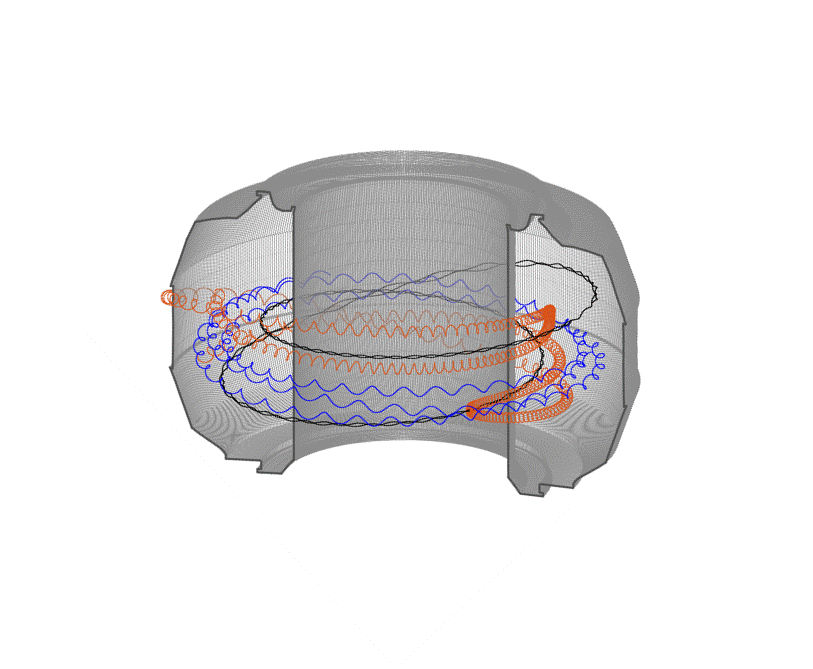
Filter News
Area of Research
- Advanced Manufacturing (2)
- Biology and Environment (10)
- Clean Energy (12)
- Computational Biology (1)
- Computational Engineering (1)
- Computer Science (1)
- Fusion and Fission (12)
- Fusion Energy (10)
- Isotopes (2)
- Materials (14)
- Materials for Computing (2)
- National Security (13)
- Neutron Science (9)
- Nuclear Science and Technology (11)
- Nuclear Systems Modeling, Simulation and Validation (1)
- Quantum information Science (2)
- Supercomputing (18)
News Type
News Topics
- (-) Advanced Reactors (25)
- (-) Biomedical (29)
- (-) Cybersecurity (21)
- (-) Fusion (23)
- 3-D Printing/Advanced Manufacturing (80)
- Artificial Intelligence (45)
- Big Data (28)
- Bioenergy (40)
- Biology (40)
- Biotechnology (10)
- Buildings (34)
- Chemical Sciences (43)
- Clean Water (15)
- Climate Change (47)
- Composites (19)
- Computer Science (102)
- Coronavirus (28)
- Critical Materials (23)
- Decarbonization (31)
- Education (3)
- Element Discovery (1)
- Energy Storage (76)
- Environment (87)
- Exascale Computing (13)
- Fossil Energy (2)
- Frontier (18)
- Grid (39)
- High-Performance Computing (44)
- Hydropower (6)
- Irradiation (3)
- Isotopes (26)
- ITER (5)
- Machine Learning (25)
- Materials (102)
- Materials Science (87)
- Mathematics (2)
- Mercury (5)
- Microelectronics (1)
- Microscopy (29)
- Molten Salt (7)
- Nanotechnology (40)
- National Security (23)
- Net Zero (6)
- Neutron Science (83)
- Nuclear Energy (52)
- Partnerships (29)
- Physics (28)
- Polymers (22)
- Quantum Computing (14)
- Quantum Science (38)
- Renewable Energy (1)
- Security (12)
- Simulation (18)
- Software (1)
- Space Exploration (13)
- Statistics (2)
- Summit (28)
- Sustainable Energy (82)
- Transformational Challenge Reactor (4)
- Transportation (67)
Media Contacts

Scientists have tested a novel heat-shielding graphite foam, originally created at Oak Ridge National Laboratory, at Germany’s Wendelstein 7-X stellarator with promising results for use in plasma-facing components of fusion reactors.
OAK RIDGE, Tenn., Feb. 12, 2019—A team of researchers from the Department of Energy’s Oak Ridge and Los Alamos National Laboratories has partnered with EPB, a Chattanooga utility and telecommunications company, to demonstrate the effectiveness of metro-scale quantum key distribution (QKD).

The Department of Energy’s Oak Ridge National Laboratory is collaborating with industry on six new projects focused on advancing commercial nuclear energy technologies that offer potential improvements to current nuclear reactors and move new reactor designs closer to deployment.
![2018-P07635 BL-6 user - Univ of Guelph-6004R_sm[2].jpg 2018-P07635 BL-6 user - Univ of Guelph-6004R_sm[2].jpg](/sites/default/files/styles/list_page_thumbnail/public/2018-P07635%20BL-6%20user%20-%20Univ%20of%20Guelph-6004R_sm%5B2%5D.jpg?itok=DUdZNt_q)
A team of scientists, led by University of Guelph professor John Dutcher, are using neutrons at ORNL’s Spallation Neutron Source to unlock the secrets of natural nanoparticles that could be used to improve medicines.

Qrypt, Inc., has exclusively licensed a novel cyber security technology from the Department of Energy’s Oak Ridge National Laboratory, promising a stronger defense against cyberattacks including those posed by quantum computing.

Fusion scientists from Oak Ridge National Laboratory are studying the behavior of high-energy electrons when the plasma that generates nuclear fusion energy suddenly cools during a magnetic disruption. Fusion energy is created when hydrogen isotopes are heated to millions of degrees...

The Department of Energy’s Oak Ridge National Laboratory is now producing actinium-227 (Ac-227) to meet projected demand for a highly effective cancer drug through a 10-year contract between the U.S. DOE Isotope Program and Bayer.

A novel method developed at Oak Ridge National Laboratory creates supertough renewable plastic with improved manufacturability. Working with polylactic acid, a biobased plastic often used in packaging, textiles, biomedical implants and 3D printing, the research team added tiny amo...

Geospatial scientists at Oak Ridge National Laboratory have developed a novel method to quickly gather building structure datasets that support emergency response teams assessing properties damaged by Hurricanes Harvey and Irma. By coupling deep learning with high-performance comp...

A new Oak Ridge National Laboratory-developed method promises to protect connected and autonomous vehicles from possible network intrusion. Researchers built a prototype plug-in device designed to alert drivers of vehicle cyberattacks. The prototype is coded to learn regular timing...


